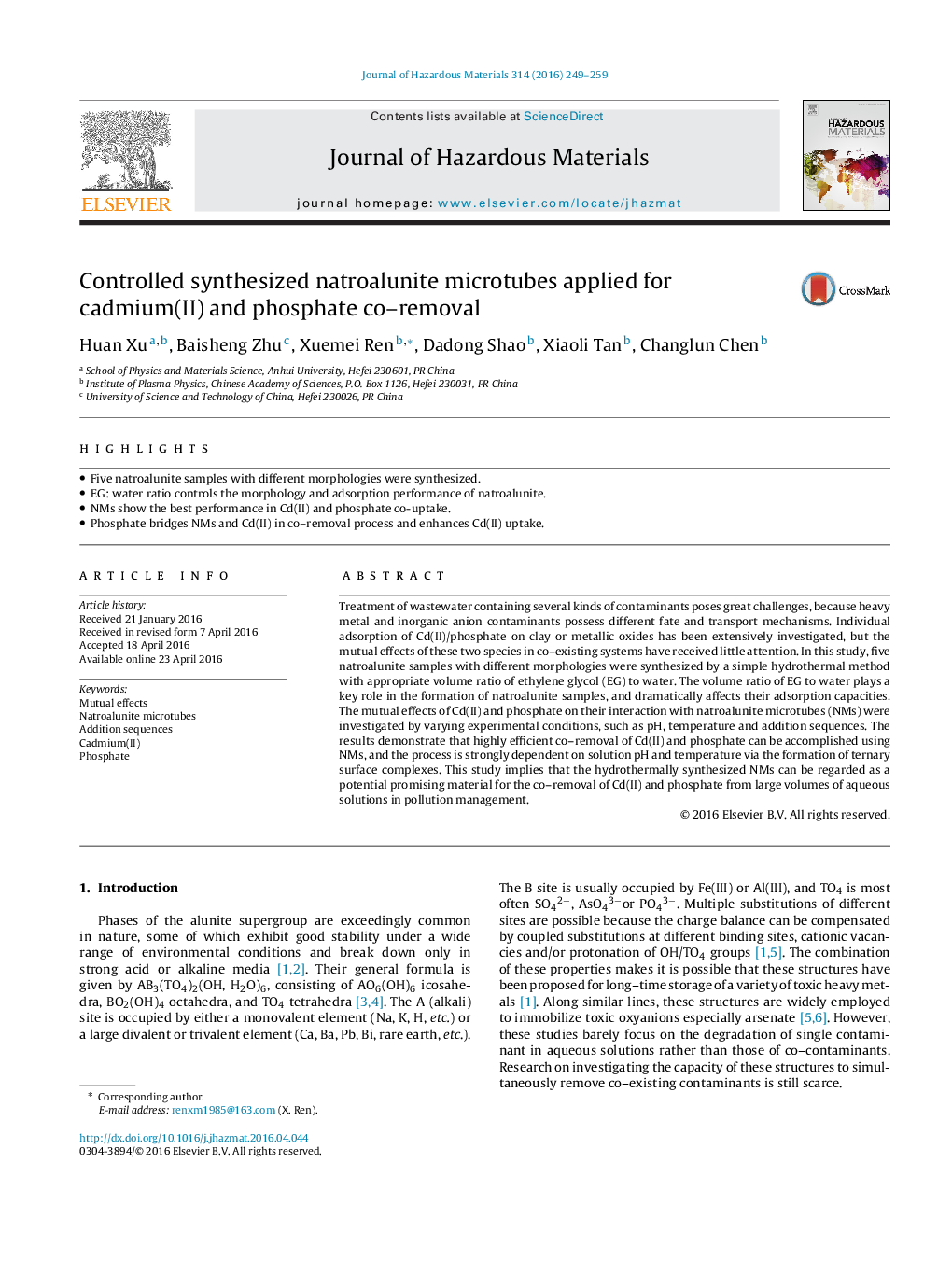| Article ID | Journal | Published Year | Pages | File Type |
|---|---|---|---|---|
| 6970481 | Journal of Hazardous Materials | 2016 | 11 Pages |
Abstract
Treatment of wastewater containing several kinds of contaminants poses great challenges, because heavy metal and inorganic anion contaminants possess different fate and transport mechanisms. Individual adsorption of Cd(II)/phosphate on clay or metallic oxides has been extensively investigated, but the mutual effects of these two species in co-existing systems have received little attention. In this study, five natroalunite samples with different morphologies were synthesized by a simple hydrothermal method with appropriate volume ratio of ethylene glycol (EG) to water. The volume ratio of EG to water plays a key role in the formation of natroalunite samples, and dramatically affects their adsorption capacities. The mutual effects of Cd(II) and phosphate on their interaction with natroalunite microtubes (NMs) were investigated by varying experimental conditions, such as pH, temperature and addition sequences. The results demonstrate that highly efficient co-removal of Cd(II) and phosphate can be accomplished using NMs, and the process is strongly dependent on solution pH and temperature via the formation of ternary surface complexes. This study implies that the hydrothermally synthesized NMs can be regarded as a potential promising material for the co-removal of Cd(II) and phosphate from large volumes of aqueous solutions in pollution management.
Keywords
Related Topics
Physical Sciences and Engineering
Chemical Engineering
Chemical Health and Safety
Authors
Huan Xu, Baisheng Zhu, Xuemei Ren, Dadong Shao, Xiaoli Tan, Changlun Chen,
